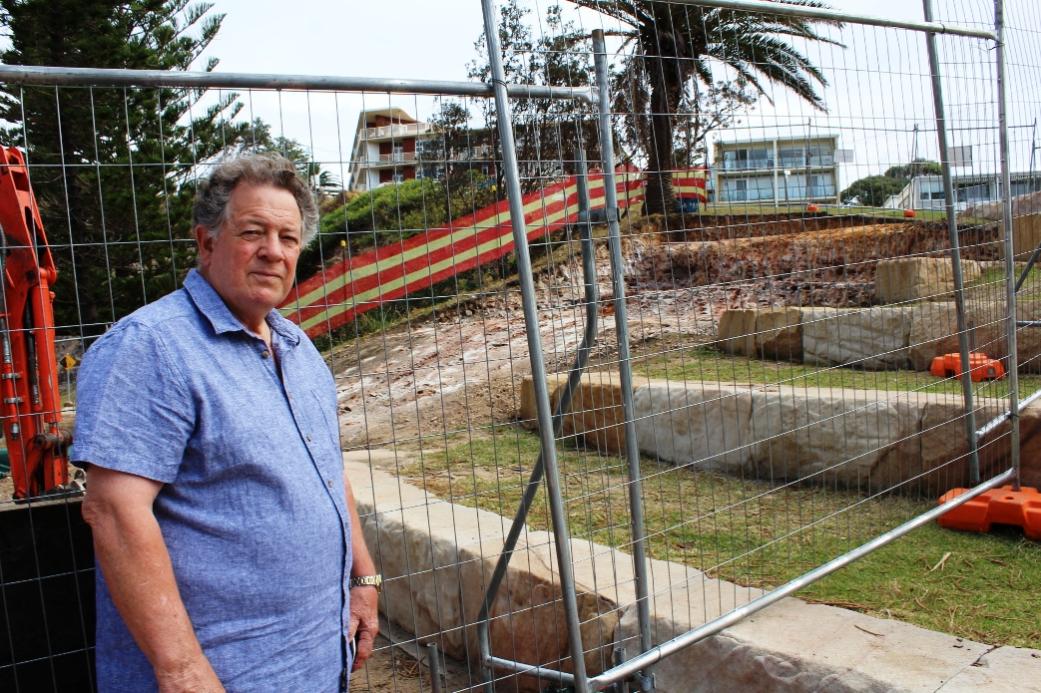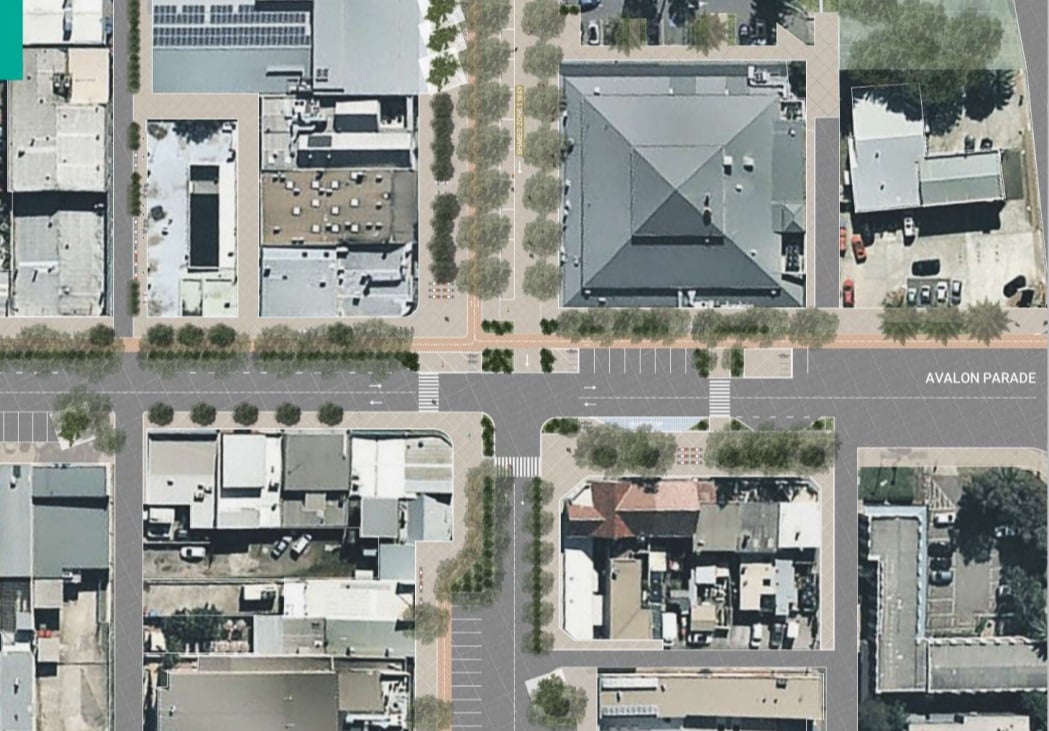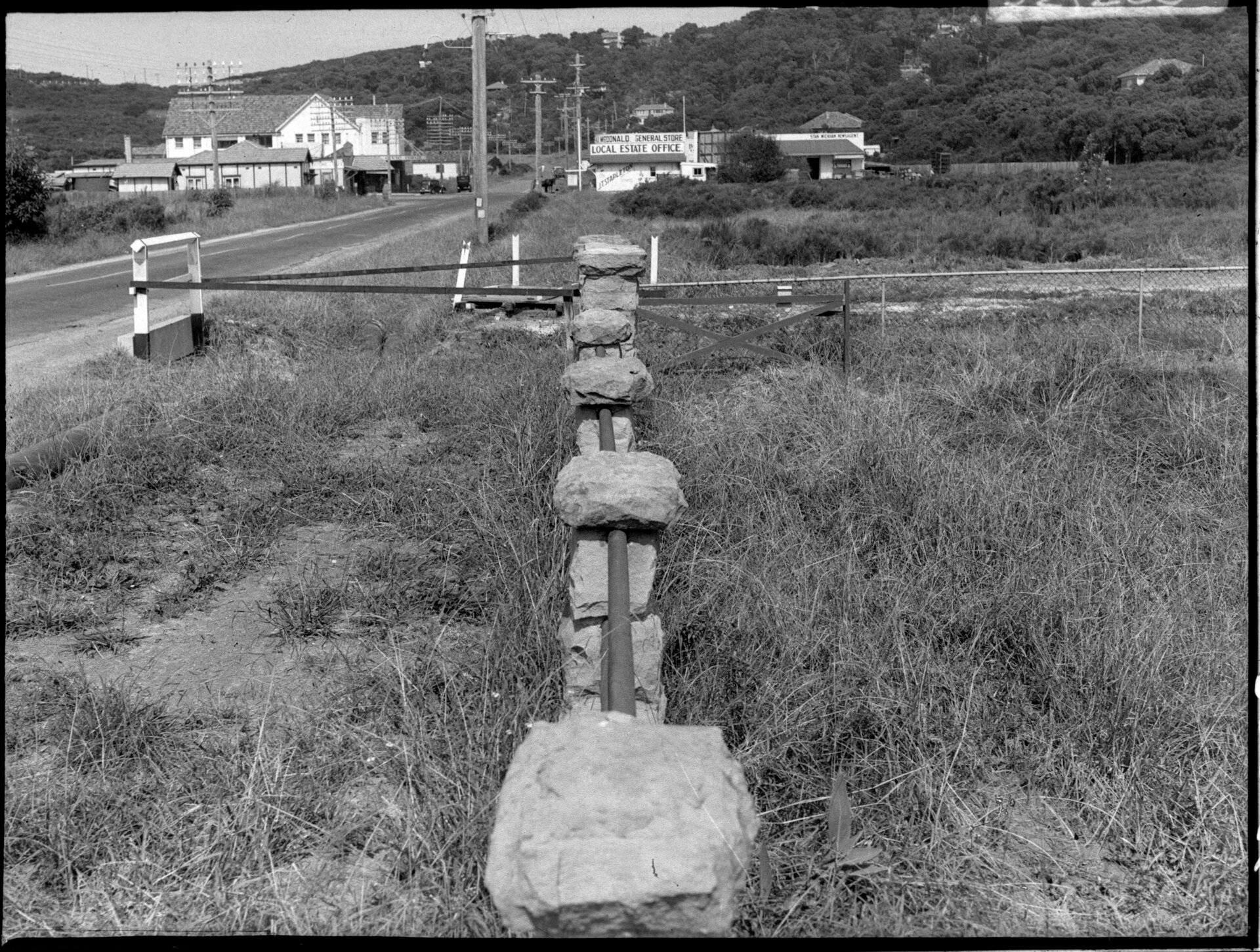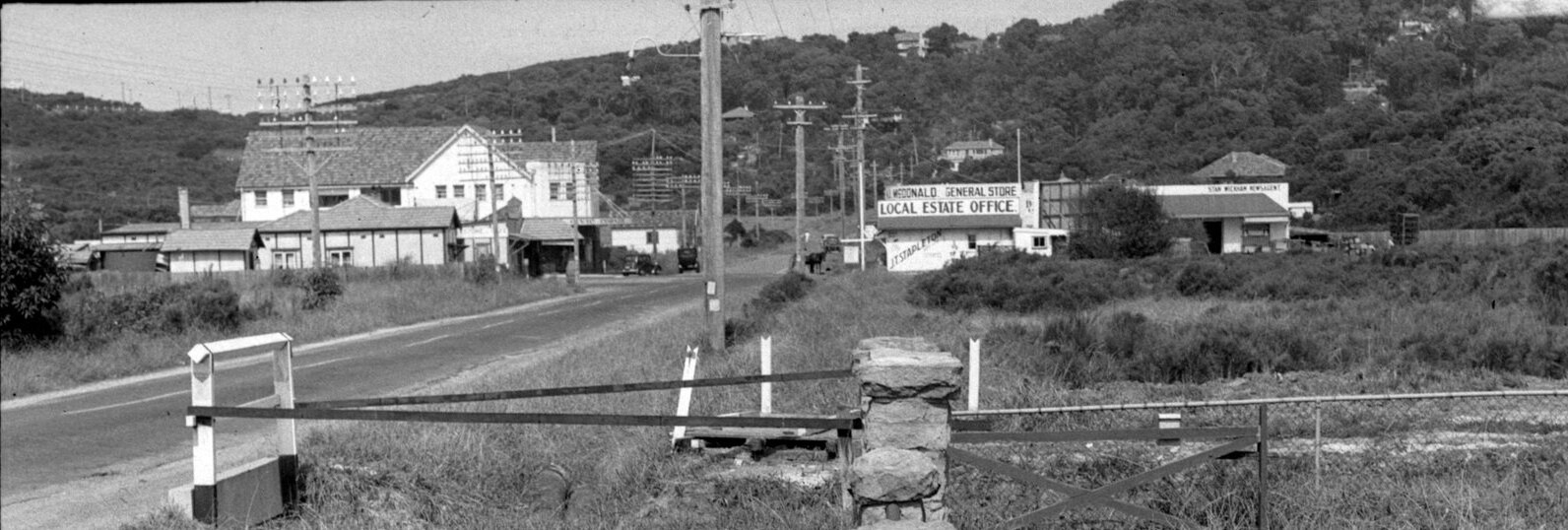avalon place plan passed by council: shared space trial to go ahead - terracing avalon beach greenspace still on agenda

Council states it has considered feedback from the community and endorsed a new plan for the future of Avalon Beach village at its July 2022 Meeting. The Avalon Beach Place Plan sets out key public domain improvements over the next 10 years.
A total of 736 submissions were received in response to the draft plan, on top of extensive upfront invitation-only community consultation in 2018 which received 1,500 submissions and generated thousands of ideas and contributions.
Council endorsed the plan but agreed to do further consultation on the proposal for terraced seating near the bus stop on Barrenjoey Rd and consider ways to address cycling needs in the area.
The draft Plan retains many of the features that the Avalon Preservation Association objected to all along, including the proposed terracing of Avalon Beach southern headland [draft p.74], which is currently a pleasant grassy headland behind the bus stop.
''This overdesigned intrusion has almost zero support in the community, and despite objections from the Community Reference Group and community groups, including APA, over several years, it remains in the submitted draft plan. The redesigned headland is erroneously presented in the consultation reports as a solution to safety issues with the narrow walking space between the bus stop and the roadway, whereas it is quite unrelated. The bus stop can easily be set back by a metre or so with no requirement to terrace the whole headland.'' APA states
The draft Plan proposed to pilot a shared zone on Old Barrenjoey Road north of the intersection with Avalon Parade, but the council has deleted any cycle path. The original bike path route proposed by the council passed through the Avalon Parade intersection with Old Barrenjoey Road.
In the opinion of APA, Clareville and Bilgola Plateau Residents Association and the Palm Beach Whale Beach Association, this proposal would have directed more bike traffic onto the major thoroughfares, require the removal of trees and parking places and was an unsafe and over-engineered solution.
The APA had prepared an Alternate Bike Plan for Avalon which utilises the Avalon laneways to feed bike riders from the main pathways on the outskirts of Avalon and funnels them through Avalon village to the shops or to Avalon Public School. This alternative plan optimises the under-utilised laneways, features reduced speed limits and, unlike the current NBC plan, requires little in the way of major roadworks, tree removals or parking changes, to achieve a safer, cheaper and more pedestrian/cyclist-friendly outcome.
“Our 10-year plan for Avalon Beach sets out both longer term projects such as redesigning the Old Barrenjoey Road and Avalon Parade intersection and quick win projects that have already been completed such as improving Dunbar Park playground in 2021,” Mayor Regan said in a statement issued after the council meeting.
“We have listened to feedback and will do further work and consultation on both cycling connections in and around Avalon as well as the proposed terraced area, with pedestrian safety our focus.'' the Mayor states
The proposal to terrace the green area of south Avalon Beach has not been popular, although the council commenced doing this towards the beach side in 2017, despite an outcry over the disturbance of what local experts stated was Sacred Ochre. Tere have also been more sections of concrete appear at the other end of this public space, without community consultation, other than a sign erected at the works site.

The place plan is focused on the area within 400 metres of Avalon Beach village but also extends northward to include North Avalon.
Improving the Old Barrenjoey Road and Avalon Parade intersection was a major issue identified through community consultation. In response to community feedback, the council will ''trial'' a ''temporary'' south bound shared zone on Old Barrenjoey Road between Avalon Parade and the entrance to the Woolworths car park.
The trial will create a wider, greener, pedestrian-friendly space through the heart of Avalon. The footpath will be widened and the street will be pedestrianised, with new street furniture and vegetation planting endemic to Avalon Beach. The community will be invited to have their say before a permanent shared zone is considered.
The funding has been provided by the taxpayer through a grant from the NSW State Government.
On May 4th 2022 The Hon. Rob Stokes, MP for Pittwater, announced funding for a pedestrian shared space trial within the Avalon village.
The NSW Government has allocated $500,000 to support Northern Beaches Council’s proposal for a shared pedestrian and vehicle zone at the northern end of Old Barrenjoey Road (between Avalon Parade and the Woolworths car park).
'The trial shared space will enable greater pedestrian opportunities through expanded footpaths, new landscaping and additional seating areas. Northbound vehicle access will be removed during the trial and southbound traffic will be limited to one lane only, 10km/h.' a release from Mr. Stokes office states
“This is all about supporting the vibrancy of the Avalon village, creating more open space and improving connectivity for pedestrians,” Rob Stokes said.
“This concept has been talked about for decades – but the funding hurdles have always been prohibitive in seeing it launched.
“This area of the village can be particularly busy with people moving between the shops, Dunbar Park, community facilities and the beach.
“The opportunity to create additional open space for people to relax, dine and move around the village is really exciting.
“Throughout COVID-19 we’ve seen a resurgence of people wanting to shop local, sit outdoors and explore the community. This project supports all of these elements and will provide a great case study for how the concept could be expanded elsewhere,” Rob Stokes said.
The funding has been provided through the State Government's Streets as Shared Spaces program.
In a Private Members Statement given to the NSW Parliament on May 17th, 2022, Mr. Stokes, Minister for Infrastructure, Minister for Cities, and Minister for Active Transport stated under the subject ''Avalon'':
''Late last year the suburb of Avalon in my electorate of Pittwater celebrated its centenary. Arthur J. Small, a local businessman and property developer first named the place Avalon because it was, "An earthly paradise, truly a most appropriate name for such a beautiful spot". The brochure for the Central Estate, one of his developments, showed large lots facing Avalon Parade. They were 66 feet wide, connecting Avalon Beach to Pittwater's eastern shore. Public recreation reserves and sheds were set aside at either beachfront and there was a regular motor bus service connecting Avalon Beach to the tram terminus at Narrabeen. The tram may be gone but the other important public facets of this development still feature at Avalon today. Mature trees now cover the landscape, helping to cool the homes and streets below on hot summer days. Avalon and Clareville beaches remain public egalitarian places where anyone can be at leisure.
For a place as remote from the city centre as Avalon, there is a remarkable cultural acceptance and embrace for the use of public transport. If you stand at the intersection of Avalon Parade and Old Barrenjoey Road, you will see wide thoroughfares, bustling with pedestrians hustling between shopfronts. In the lead-up to last year's council election, local candidates agreed that lowering the speed limits in the Avalon village centre would not only slow rat runs but also make the place more attractive and productive. Lowering speed limits to 30 kilometres per hour in appropriate locations was one of the major recommendations of the Committee for Sydney's research last year to reinvigorate high streets, which is particularly relevant during this National Road Safety Week.
The New South Wales Government is backing the vision in the Northern Beaches Council's Avalon Beach Place plan, with half a million dollars through the Streets as Shared Spaces program. It will trial a much‑anticipated closure of Old Barrenjoey Road. The trial will create wider footpaths, new landscaping and greater open space for people to relax, dine and move about. We need to apply this long-term view when we plan new places today. In many new developments, it can be difficult to see how the design decisions we take today will stand 100 years from now. High streets and public squares are uncommon in most post-war urban development. Mature trees are cleared, with very small plots for new trees to take their place. Footpaths and street verges are treated as optional luxuries and house designs do not always consider the context of their location, leaving them dependent on expensive and unsustainable air conditioning to make them habitable. How will local communities 100 years into the future look upon the places we build today?
The Federal election campaign has correctly focused on making it easier for families to buy homes, but we also need to think about the investments we can make today to make homes valuable beyond their ticket price. Many planning interventions that some call red tape or unfeasible today reap huge benefits over the long term. Unlike hard infrastructure, which depreciates in value over time, investments in trees and public spaces as part of new development are worth more to the community as they grow. However, we pile these all together as singular development costs that supposedly make housing unacceptably expensive.
Too often in the debate over urban development we take an expansive view of costs and a reductive view of benefits. A local doctor recently mentioned to me how we only care about our health once we become sick. We do not pay enough attention to the actions we can take today to prevent future maladies. This applies equally to our urban environments. While the market could potentially build more housing than it does today if we paid less regard to the housing and urban design standards we choose to uphold, we know that is a recipe for failure not only for building substandard housing today but also for creating poor-quality investments over the long term.
Pittwater is a healthy community by New South Wales standards, and the local natural and built environment is a significant factor in attaining those outcomes. Places with ample open space that facilitate active lifestyles let people live longer, healthier, happier and more fulfilled lives. As the recent Netflix hit Old Enough! shows, cities that make it easier for children to walk safely to school, to friends' houses and to shops, so commonplace in Japanese cities, enforce good, healthy habits that young people will carry throughout life. Amid the challenges in the housing market we face today, let us make sure that we keep at least one eye on the long view. As parliamentarians, we have responsibilities not only for our communities today but also for those who will live in our communities in the future. Like Arthur J. Small envisioned 100 years ago for Avalon, let us make our local communities earthly paradises for centuries to come.''
Traffic arrangements at the intersection of Avalon Parade and Old Barrenjoey Road will be simplified as a result of the reduction in approaching traffic lanes, and local bus routes will be adjusted to accommodate the changes.
Council states it will ''work with'' the community on the refinement and implementation of the trial.

Draft Avalon Place Plan illustration of the Shared Space

Government Printing Office d1_45760 - Avalon [From NSW Government Printer series: Government. Insurance.] Contents Date Range 01-01-1948 to 31-12-1948 NSW State Records and Archives Items: FL3814496, FL3814346, FL3814324 - and enlarged section from to show detail: from Avalon Shops: Some History

The council states their place plan also sets out improvements to the Avalon Beach streetscape, including resurfacing footpaths and roads, landscaping, installing new street furniture, increasing opportunities for art in public spaces, performance spaces and improved lighting.
Greening the local area and protecting the natural environment is a also stated to be a high priority of the council's place plan for Avalon.
''There will be extensive vegetation planting and Council will also investigate opportunities to naturalise and revitalise Careel Creek and stormwater drainage systems.
The place plan focuses on public domain improvements and does not incorporate any changes to current land use planning controls, such as building heights, zonings and density.'' the council statement reads
Careel Creek path behind the BHS
Greens Councillor Miranda Korzy forwarded the following after council's July 2022 Meeting, which was posted on her social media page as a representative of Pittwater:
What do Avalon residents want?
That’s what we’ve been discussing for four years now and the outcome, My Place: Avalon, otherwise known as the Avalon Beach Place Plan, was on the agenda at this week’s Northern Beaches Council meeting.
More than 1,000 residents took part in the consultation with council staff over the four years, filling in surveys, going to workshops and pop-up stalls, joining a community reference group as well as a public forum last year - organised by former Pittwater Councillor (and state MP) Alex MacTaggart. As an Avalon resident I took part in that consultation, and I have read every submission (736) made on the final draft, including more than 600 written ones.
Bike paths
I appreciated staff’s removal of the proposed bike paths from the plan’s final draft because they were opposed by 69% of the 615 written submissions. I’m a Greens councillor and supporter of active transport. As a cyclist living for many years in Canberra and Amsterdam - where bike riding is ubiquitous - I rode to university, work and for leisure.
However, residents clearly said that freedom of movement for pedestrians and protection of trees in the centre of the village were more important - and anyway Avalon’s hilly geography makes bike riding less attractive for most locals. So I was very happy to support the community’s wishes on this issue.
Shared one-way road
On the proposed trial for a shared one-way section of road on Old Barrenjoey Road outside Woollies, 55% of residents were opposed. However, when I approached staff about it, they said that the intersection no longer meets current standards. Because the council had carried out the assessment of the intersection, it was now legally obliged to bring it up to scratch. I therefore asked to see the traffic modelling, which staff then walked me through, and it appears it will significantly lessen congestion at the crossroads - with much shorter waits.
So even though 52% of respondents were opposed to the plan in general, following the expert advice, I felt I had to support changes to the intersection. And when I’d previously talked to staff about getting the patchwork of footpaths fixed, I’d been told that can’t happen until the plan is finalised and implemented.
The Ziggurat - terracing the hill
I did not, however, support the proposal to cut away and terrace the hill behind Avalon Beach. This is the main natural feature on arrival in the village, a survivor from the extensive sand mining that ravaged Avalon’s dunes further north, and which I suspect shields the beach from traffic noise. Residents repeatedly said in their submissions that we want to protect Avalon’s natural environment and maintain the area’s informality.
I note that the hill is not an embankment - as the place plan and some councillors have been describing it. An embankment is an artificial slope. The hill, by contrast, is part of the natural rise of the land towards the cliffs south of the beach. To terrace it and carry out other work on the “Beach Gateway”, the council estimates would cost at least $5 million. How much cheaper and more in keeping with the spirit of Avalon would it be to plant banksia trees and some other endemic plants in the area to soften the landscape, provide shade and prevent erosion?
When reading submissions, I tallied all those that explicitly mentioned the terracing. Of the 94 submissions that did so, 81 opposed it. The following comment is representative of those contributions:
“Who thought it would be a good idea to build sandstone terraces so that people can sit and look at the road junction and petrol station?”
Similarly:
“The community does not want unnecessary concrete or stone terracing in place of the grassed areas.”
Given the community’s desire to keep Avalon natural, and the overwhelming opposition of those who mentioned the hill, I did not support this section of the plan.
The vote
As a result and as the only Avalon resident on the council, I put up an amendment at the meeting to scrap the terracing but to otherwise pass the plan.
However, Your Northern Beaches Councillor Mike Gencher moved an alternative amendment, seconded by Liberal Councillor Rory Amon, calling for further consultation on cycleways within the next year and on the terracing for the “Beach Gateway” when the council comes to implement it.
My motion was supported by three other councillors: YNB Curl Curl Councillor Sue Heins - who encouraged other councillors to accept what Avalon residents had so clearly said they wanted; Narrabeen Councillor Vince De Luca; and Greens Curl Curl Councillor Kristyn Glanville.
Councillors’ Gencher and Amon’s amended motion was then passed by the council unanimously. I supported it so that we can get on with the footpaths, lighting and tree planting - which residents have repeatedly said are their top priorities - as well as the shared roadway trial ASAP.
I’m very disappointed and frustrated with this episode. The public consultation was not just some Mickey Mouse talkfest controlled by a coterie of baby boomer residents’ groups. Over four years, everyone had an opportunity to have their say - and they did so in large numbers, from primary school kids to seniors.
I note also that until Monday when a story appeared in The Sydney Morning Herald about the bike paths, I had not received a single email from residents about them. Since then I’ve had two from a resident in Duffys Forest who read the Herald story, and during the council meeting received one from a cycling group.
Furthermore, we do not need bike paths to encourage or create safe cycling. Amsterdam when I lived there, did not have cycleways in the centre of the city, yet bike riding was safe. I’m keen to have a discussion about how we can make that the case here - but it’s an issue that warrants attention not only for Avalon, but for Pittwater more generally, if not the whole of the Northern Beaches.